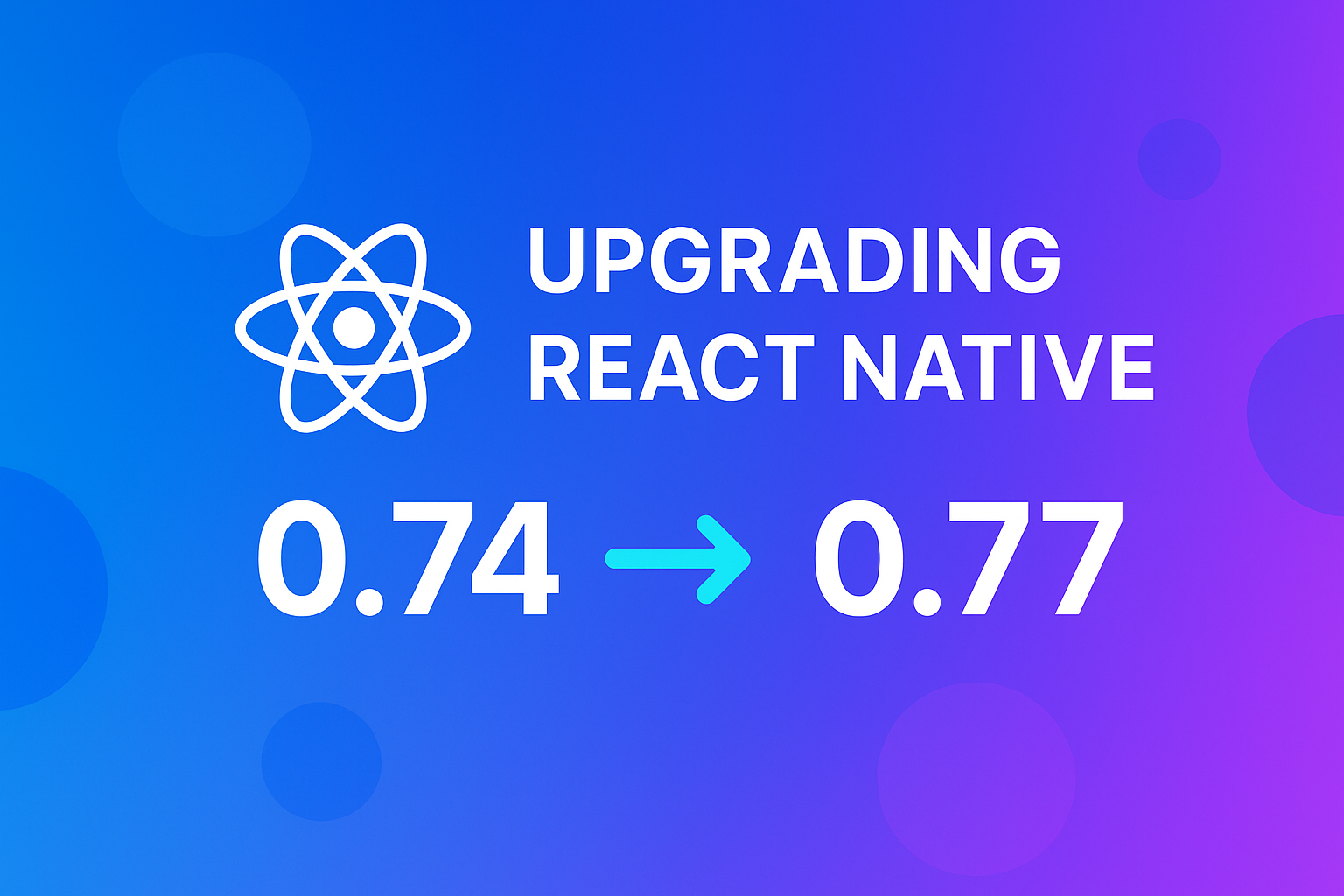1. Introduction: Why We Chose This React Native Upgrade
Our React Native upgrade from 0.74 to 0.77 wasn’t planned for this month. However, reality had other ideas. Google Play began enforcing new API levels. Additionally, iOS started throwing privacy warnings. Moreover, several dependencies stopped supporting our version.
Our goal was simple:
- Stay compliant with store requirements
- Unlock performance improvements
- Keep the app current with modern libraries
2. Preparing for the React Native Upgrade Process
Before diving in, we prepared for potential challenges.
Evaluating necessity: First, we reviewed release notes and community posts. This confirmed the React Native upgrade was critical, not optional.
Essential tools: React Native Upgrade Helper became invaluable. Consequently, it provided file-by-file guidance throughout.
3. React Native Upgrade Challenges We Encountered
This 0.74 → 0.77 jump was significant. Therefore, it came with plenty of hurdles.
Platform-Specific Issues
iOS complications: Swift compatibility broke several builds. As a result, we ran pod install --repo-update repeatedly.
Android conflicts: Updating Gradle and the Android SDK created version conflicts. Unfortunately, some modules refused to cooperate with the new SDK.
Library Compatibility
Reanimated needed a major update. Meanwhile, Flipper caused recurring problems. Eventually, we disabled it completely.
Build Failures
- “Failed to find target” errors appeared on Android
- Mysterious red screens showed up on iOS
- We spent hours digging through Xcode logs and adb logcat
4. Step-by-Step React Native Upgrade Guide
Here’s our systematic approach to the React Native upgrade:
Initial Steps
First, we updated build.gradle and SDK versions. Then, we ran the react-native upgrade command.
Key Changes
Next, we updated all dependencies. After that, we replaced deprecated libraries. Subsequently, we adjusted Podfile settings for iOS builds. Finally, we fixed unsupported native code integrations.
Architecture Considerations
We didn’t adopt the new React Native architecture yet. Nevertheless, we cleaned up old configs. This ensures the next React Native upgrade will be smoother.
5. Debugging the React Native Upgrade
Common Issues
- Breaking libraries
- Gradle version mismatches
Effective Solutions
To address these problems, we pinned specific versions of unstable libraries. Additionally, we used patch-package to apply quick fixes. This approach saved us from waiting for maintainers.
Special Fixes
One custom native module wasn’t ready. Therefore, we patched it manually. Admittedly, this wasn’t fun, but it proved effective.
6. Testing After the React Native Upgrade
We tested on both simulators and real devices. This included older Android phones and newer iPhones. Moreover, we tested everything in between.
Issues We Found
A few animations broke due to Reanimated changes. Furthermore, we noticed layout shifts on iOS. These were minor but noticeable.
7. Publishing After the React Native Upgrade
Google Play required us to target the latest API level. Similarly, iOS demanded additional privacy keys in Info.plist.
We rolled out beta builds first. Then, we monitored them carefully. Only afterward did we push to production. Thankfully, no major issues emerged after release.
8. React Native Upgrade Best Practices
This 0.74 to 0.77 jump taught us valuable lessons.
Recommended Practices
- Perform incremental upgrades instead of skipping versions
- Keep dependencies updated regularly
- Always test on real devices, not just emulators
- Use Upgrade Helper before modifying any code
Future plans: The next React Native upgrade will likely adopt the new architecture.
9. Conclusion: Our Upgrade Journey
The upgrade wasn’t easy. We hit errors constantly. Late nights were spent debugging. More coffee was consumed than we’d admit. But ultimately, our app became faster and more stable. Additionally, it now complies with all store requirements.
Advice for developers: Don’t fear the React Native upgrade process. Instead, plan carefully and tackle issues one at a time. Lean on community resources whenever possible. It’s not glamorous work. However, it’s essential for keeping apps alive and future-ready.
Bonus: Upgrade Troubleshooting Checklist
- Audit all dependencies before upgrading
- Use Upgrade Helper for file-by-file guidance
- Update Gradle/SDK versions step by step
- Run
pod install --repo-updatefor iOS issues - Disable Flipper if builds fail
- Use
patch-packagefor temporary fixes - Test thoroughly on real devices
Check out our latest LinkedIn post to join the conversation on React Native upgrades and share your experience with the developer community.
Also, don’t miss our previous article: Mobile Optimization Boosts Speed & Drives Growth – exploring related mobile development topics.

Leave a Reply
You must be logged in to post a comment.